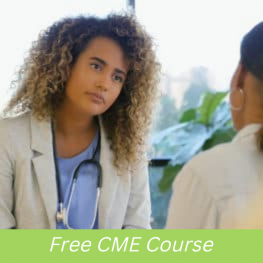If you are like many physicians who have heard about bioidentical hormone replacement therapy (BHRT) you probably have many questions. Is it safe? Is there a market for it? Will it help my patients? APIM offers advanced training in BHRT to help guide you through all of these questions and more, but if you’re wondering whether BHRT is worth adding to your practice, it can be helpful to hear from someone who has walked in the same shoes as you–a provider who understands the questions and concerns you have because they had the same ones. At a recent event, Malaika Woods, MD, MPH, and Board Certified OB/GYN who specializes in functional and obesity medicine gave an excellent presentation on this very subject matter as presented by APIM. Her focus: to highlight the top questions, concerns, and benefits of BHRT you have as a provider and how to translate APIM’s BHRT training into small, digestible pieces that patients will understand.
Dr. Woods does this by first acknowledging a common truth: most physicians know very little about bioidentical hormones. And while APIM’s BHRT training fully brings bioidentical hormones to light, it is helpful to understand some of the top benefits and misconceptions about hormones so you can better educate your patients. Dr. Woods addresses this seamlessly.
For example, she discusses estrogen–one of the most controversial hormones. Estrogen in its natural form (estradiol) is extremely important for good health. For menopausal women, it can treat hot flashes, night sweats, and vaginal dryness and shrinkage. But its benefits extend far beyond symptom improvement. Estrogen can also reduce the risk of colon cancer and osteoporosis by up to 30%.
Perhaps the largest misconception about estrogen is that it causes cancer. This conclusion was based on a randomized trial conducted in the early 2000’s called the Women’s Health Initiative in which women in their 60’s were given synthetic hormones in the form of Premarin (conjugated equine estrogen) or Prempro (conjugated equine estrogen plus medroxyprogesterone acetate). Ultimately, the study was stopped early due to concerns over increased heart attacks, strokes, and breast cancer experienced in some of the participants. After this study, many physicians started to label estrogen as “bad” but the study’s downfall was that it looked solely at synthetic hormones. The synthetic hormones (specifically synthetic progestin aka MPA) was the culprit of these negative outcomes. The participants were also much older (60’s) than patients typically are at HT initiation, which typically begins in the 50’s.
A later study called the ELITE study actually compared the timing of hormone therapy initiation and only used bioidentical hormones which mirror the hormones produced in the body. It found that women who used oral micronized estradiol (plus bioidentical progesterone for participants with a uterus) less than six years from the start of menopause enjoyed slower progression of atherosclerosis, and the group who used bioidentical estrogen and progesterone gel ten years after the start of menopause experienced no change in atherosclerosis progression. The key takeaway is that bioidentical estrogen and progesterone had no ill effects on the heart in either group and actually had positive benefits in women who started hormone replacement within six years of menopause initiation. This is just one misconception about hormones that Dr. Woods debunks in her presentation. There are many more.
In addition to dispelling misconceptions like these by providing factual, evidence-based information that the average patient can understand, Dr. Woods also offers great insight regarding what mistakes to avoid when you start your BHRT practice so that you can dodge pitfalls that often catch novice BHRT practitioners.
Dr. Woods encourages providers to overcome “overthink-itis” and to be comfortable with learning as they go. She shares a great personal anecdote that is a lesson to all wellness providers who are so often told they need fancy equipment to run a successful practice–not just hormone therapy. She encourages providers to ask “what demographic do I serve?” Every business has a niche demographic and the more you know about yours, the more successful you will be. For instance, the needs of middle aged, menopausal women are different from the needs of men in andropause or patients concerned about sexual health or weight loss. If you thoroughly understand your target demographic and have products and services that specifically address their needs, you are far more likely to be successful. Along with other helpful tips to maximize profit, Dr. Woods promotes taking advantage of the APIM/World Link Medical community, so that you feel supported and not left to your own devices.
To learn more about how BHRT can benefit your patients and bring a new stream of revenue to your practice, be sure to register for the next session of Part I: Discover the Power of BHRT.
Objectives:
Upon completion of this workshop, the healthcare professional will be able to:
- Discuss important research studies that address hormone replacement and how these studies have been misinterpreted.
- Describe common side effects of BHRT and how to manage them.
- Compare the risks versus benefits of estrogen, progesterone, and testosterone and how to explain consent forms to your patients.
- Examine case studies of different BHRT patients to help improve patient outcomes.
- List three mistakes to avoid when starting a BHRT practice.




